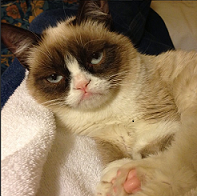0
















| Thumbs Up |
| Received: 103 Given: 0 |

Kind of an overly PC article, but informative nonetheless:
Riot erupted from daily frustration
Twenty years ago, racial tension in the city reached its tipping point.
A Halifax bouncer turned away several young black men from Rosa’s Cantina for reasons they felt had more to do with the colour of their skin than the fact they had been involved in an earlier scuffle on Argyle Street.
The white men involved in that same fight were already inside. The fallout would come the following night.
"The whole idea of black men being denied access or there being different rules put in place for (them) when they were going to clubs was a long-held thing (downtown)," Sgt. Craig Smith of the Halifax RCMP said in a recent interview.
"Since then, I’ve . . . become friends with individuals that used to bounce . . . who say the owners would tell us (that) after you have a certain amount of blacks in there, that’s enough. So you come up with whatever kind of mechanism you want to disqualify people from getting in."
At the time, Smith ran the local YMCA. He would soon be appointed to the race relations committee created to try to soothe tension between the police and the black community.
Even for him, it proved to be a crapshoot. Young black men were turned away at a club’s door about as often as they were allowed inside. In the black community, they found limited role models in the education system and few opportunities in the job market.
So in the wee hours of July 19, 1991, 150 young black men vented their collective frustration on the nightclub district, shattering dozens of windows and the city’s ability to ignore an ugly truth.
"It was one of those things you couldn’t turn a blind eye to (any longer)," Smith said. "You couldn’t ignore the racism that was going on down there."
That ugliness fuelled the mob as it grew along Gottingen Street, before flowing down to Argyle, Blowers and Grafton streets at about 1:20 that morning, and then returning to the north end.
Some in the crowd may have grown tired of being barred from downtown bars. Some may have lost their gold chains after being forced to leave them at a coat-check booth and then being told by the bar that they would not be reimbursed. Others might have been frustrated that, at the time, the Halifax area had the highest unemployment rate for African-Nova Scotians.
The men hurled rocks at storefront windows, the police station, and assaulted those who stood on the street. Gottingen Street glittered with broken glass, but police said at the time that there was no sign of looting.
At least 30 officers met the crowd wearing riot gear and erected barricades to try to dilute the group’s size and its anger, finally dousing it at about 3 a.m. Police arrested three men and one young person that morning, charging them with a total of 15 counts of assault.
About 20 people were injured in the so-called race riot, 15 of whom were white, The Chronicle Herald reported at the time. Six people were taken to hospital. One had been knocked unconscious with a baseball bat.
Rev. Darryl Gray, a once-prominent figure in this city’s black community and a minister, tried to defuse some of the violence early Friday morning when he learned of what was happening.
Gray praised the police in the following days for their willingness to talk about the violence and the police response. But he said the fact that they showed up in riot gear with only one black police officer did not help the situation.
There are currently 1 users browsing this thread. (0 members and 1 guests)
 Canada
Canada
 Canada
Canada
 Canada
Canada
 United Kingdom
United Kingdom
Bookmarks